The act of restoration through rehabilitation is experienced through tactile engagement with the film copy. By using a notion of grain and noise to help map a historical continuity that transcends the media of moving image transfer, this essay will discuss the materiality of mass reproduction and dissemination, and the cultural spaces, dynamics, and trajectories that they generate.
Media piracy is now the world’s biggest film distribution network, an infrastructure characterized by technological breakdown and degraded film copies. Looking at the ways in which informal practices regrade images through continuous reproduction reveals the way hierarchies of image quality reflect social hierarchies.
Informal practices can be defined in opposition to “formal” or legitimate structures such as housing, utility distribution, or paid subscriptions. The term “informality” first came into discursive use through studies of housing informality and the gray legality of land markets, in a field of study that allowed political science, anthropology, and sociology to intersect. The emergence of urban informality as a way of life operates through process rather than product, resulting in a transactional approach to value that hacks public space and subverts existing infrastructures, including infrastructures of media distribution. Though they appear remote, detached, even obscure, infrastructures are deeply personal. Infrastructural informality is a fundamentally bodily experience, perceived through an awareness of the mutability of social formations.
Pragmatically, informality can be an affordable option that provides access to pervasive media forms such as Hollywood or Bollywood cinema. It can also be the only option. In his pioneering study on the subject Ramon Laboto argues that media informality is as much a space for subcultures or anti-authoritarianism as it is a cultural space for mediocrity or “unpopular culture.”[1]
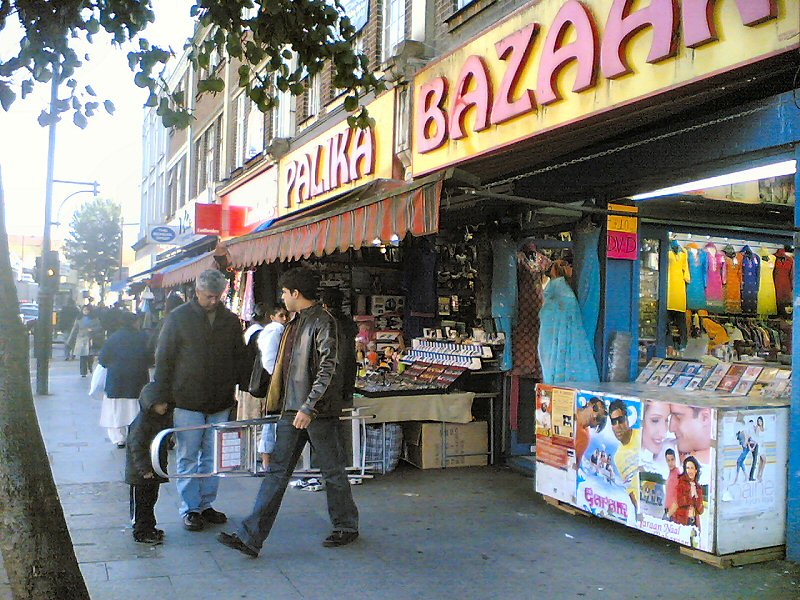
Video CDs and movie posters on Broadway in Southall, London
Media informality smoothly permeates the existing framework of urbanity as a result of the arrival of audio and videocassettes, allowing an emancipatory method of home copying, production, and distribution. By the early 21st century, the world’s great megacities had an established parallel infrastructure for the circulation and dissemination of national (and international) moving-image culture. In Pakistan in 2003, for example, while an embargo on Indian cinema remained in force, video copies of Bollywood films arrived in Karachi before they were even released in India. Despite having had a rich and vibrant film tradition that flourished from the 1960s to the early ’80s, today Pakistan is unique for the ways in which a climate of what Ali Nobil Ahmad describes as cinephobia limits and defines the circulation of films. Amid religious opposition, governmental inertia, and lack of funding, the precariousness of film culture in the country is often exacerbated by public instances of anti-film iconoclasm.
One such example of public cinephobia was the countrywide destruction of cinemas that took place in response to the YouTube mini-film The Innocence of Muslims in 2012. Made by a lone American Christian zealot, the film sparked global outrage due to its depiction of the Prophet Muhammad. Countrywide riots saw at least six cinemas in Karachi destroyed on one day alone; YouTube was swiftly banned from Pakistani servers, as it remains today.
Today, the Pakistani diaspora, in its varied linguistic and ethnic groupings, is largely delivered the remnants of its national moving-image culture by way of YouTube transfers from gray-market VCDs (video compact discs). In the absence of a state film archive, the copyright and provenance of almost any existing carrier of a Pakistani film is a complex terrain. People of a certain age may not even recall the days when EMI Pakistan released products that would, in accordance with present-day polarities, be described as “formal.” In 2014, my partner brought 500 seven-inch records from Islamabad back to London; they were all soundtracks released in the heyday of Pakistani film production in the 1960s and ’70s. Having never had any lived experience of legitimate audio or video media, a young customs officer suspected my partner of being a VCD smuggler.
Informal networks of film distribution do not use structured obsolescence or hierarchical formats, they instead prefer to provide access for users as quickly as possible following what Hito Steyerl called the mantra of “velocity, intensity, spread.” Throughout the recent canon of writings on the hierarchy of images the concepts of signal, noise, interference, and static come to bear on the idea that “[informal] texts move through space and time with a lower level of interference from copyright law, taxes, tariff and state censorship”[2]—and thus, conversely, accrue the visible traces of transcoding, lossy-to-lossy transfer, and poor levels of data compression.
Media anthropologist Brian Larkin highlighted the interruption of the transmission that media technologies broker in their address to their spectators. Looking at the circulatory dynamics of contemporary Nollywood film, Larkin argued that in the colonial era in Nigeria the prerequisite of infrastructural projects from railways to radios was the ability to inspire awe, giving shape to what he calls the “colonial sublime.”[3] The sublime and technology are subject to relational ordering, with the consequence that education and training domesticate the ability to replicate the technological sublime, thus effectively destroying it. In my own reception of the static surfaces of gray-market films, this process is cyclical. While Larkin argues that breakdown and failure usurp the power of the sublime, there is an argument to be made for a sense of re-sublime: technological breakdown becoming the serendipitous sublime when pristine visuality is the banal norm of everyday experience.
Cinephobia is also a symptom of cinema’s exile from the built space of the theater. In Pakistan the exodus of film from the cinema theater began with the arrival of VCR technology in the 1970s, which also saw the most recent authorized attempts at media migration, transferring the country’s cinematic heritage from extant 35mm reels onto VHS. Under the authoritarian rule of Zia-al-Huq, the national cultural agenda was reset to ensure that public entertainment was suppressed at all cost. Short of changing the very nature of its citizens’ desires, personal VCR players became a good way of ensuring public pleasures became private ones. As such, the film holdings of the National Archive of Pakistan appear to be almost entirely composed of low-resolution VCDs transferred from the last generation of legitimate VHS transfers.
Vast media bazaars such as Darbar Market Urdu Bazar in Lahore, the Rainbow Center in Karachi, and Nishtarabad in Peshawar, are revelatory of a complex post-colonial urbanism. Elaborate, intricate, and informal, these organic infrastructures are reflective of an attitude of ambivalence characterized by a labyrinthine organizational structure or what media academic Ravi Sundaram called a “pirate modernity.” More recently, the tactics that have contributed to this informal technoscape have been described as an expression of Jugaad tactics, a Hindi word for a practice (Urdu: juggaar) closely approximated to hacking or innovative recycling, whereby extant hardware is retailored or renovated to suit idiosyncratic needs.
In communities in London with a large South Asian population, the story was somewhat different. In the South London district of Tooting and in Southall in West London, as well as throughout communities across the UK, cinemas that were lost to the widespread closure of theaters in the 1960s and ’70s were given a second life as institutions showing Bollywood or Asian films. The great Granada Cinema in Tooting, designed by the renowned architect Cecil Masey, and commonly agreed to have been the most beautiful picture-house in the country, was closed in 1983 and turned into a bingo hall. An Indian company who used it for Sunday repertory screenings briefly kept it in business, before the popularity of home video rental led to its closure. Across Tooting, the names of grocery stores such as Chandni Pan Video and Tooting Video Centre are testament to that once-booming trade in video rental. Today, a multipurpose store fills one of the vacant video-rental stores, selling telephone cards, Bollywood DVDs, CDs, and Pakistani VCDs. Among others, I buy a copy of the 1957 film Saat Lakh (“700,000”), directed by Jafar Malik.
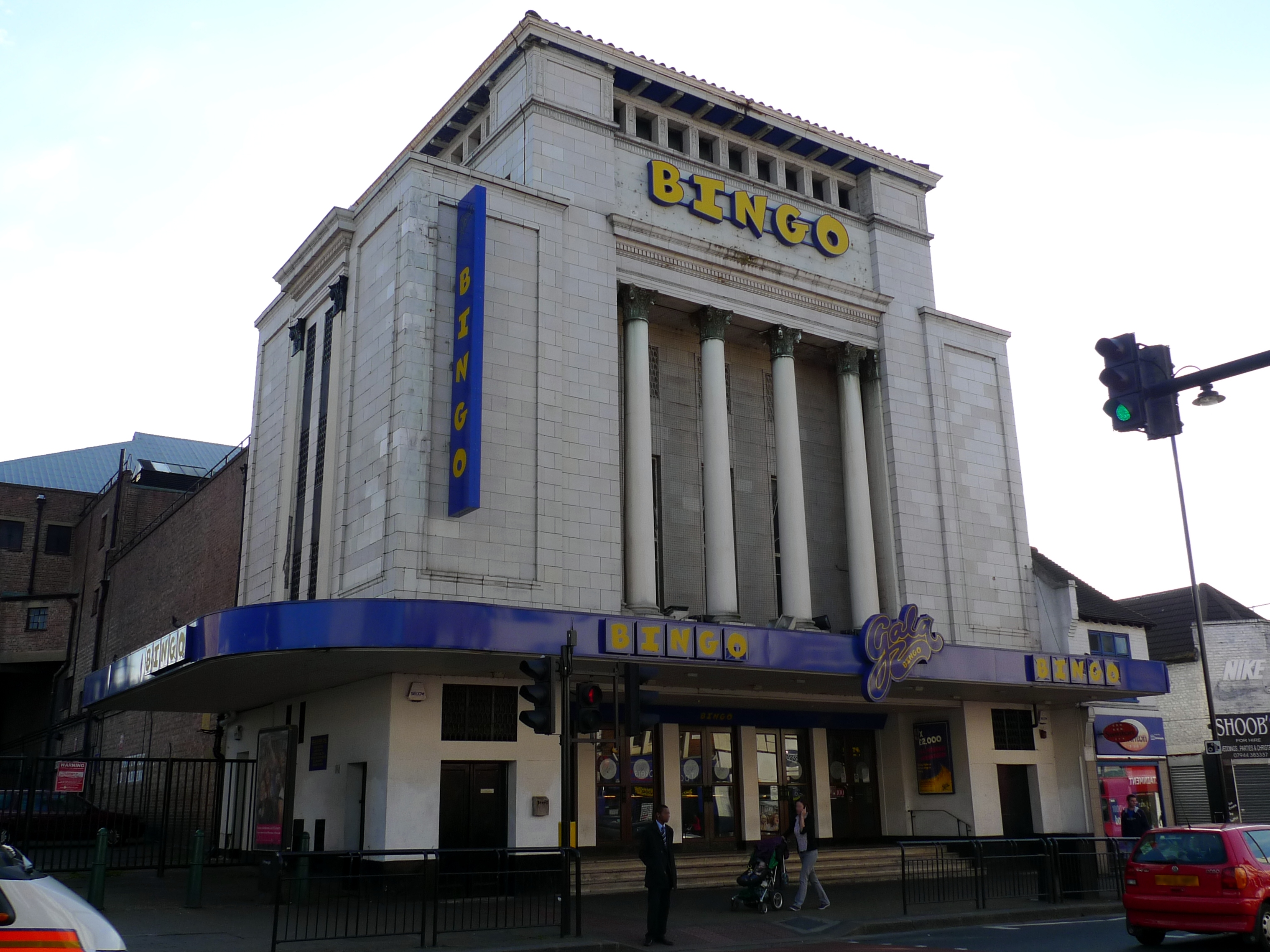
Granada Cinema in Tooting, London
As is a common feature, scrolling and static watermarks jostle for position on Saat Lakh, visible evidence of successive generations of gray-market claimants. Early on in the global battle against copyright theft and film piracy, various attempts were made to hide codes or indicators that could help investigators track down the cinema wherein a bootleg was recorded. Today, watermarking is integrated, with increased sophistication, in the fields of security, copyright, and video game design. The image surface of Saat Lakh appears degraded throughout, having suffered generation loss through the digital transfer from the earliest carrier, which, as the horizontal hum of both competing watermarks attest, must have been VHS. Uniform and unchanging throughout the film is the pithy brand name SADAF, a media distribution company.
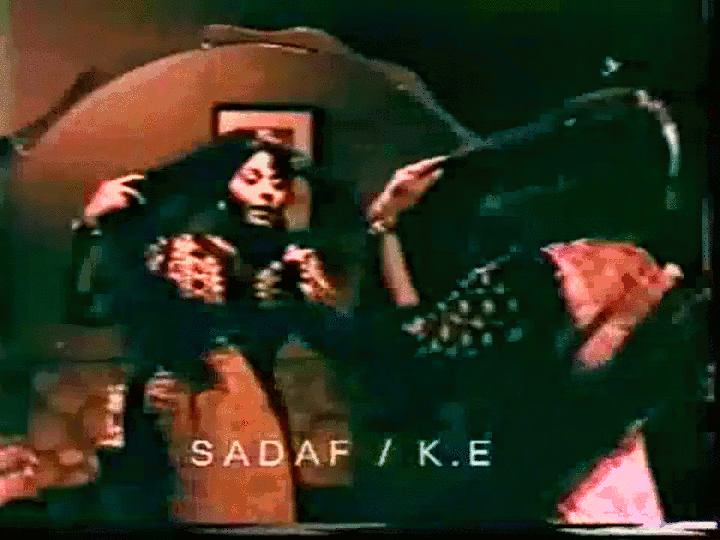
Competing watermarks on the film Saat Lakh.
In the Pakistani megacity of Karachi, the trading company SADAF was able to set up vast production facilities to manufacture smuggled, pirated Indian films for sale across the world.[4] In bootlegging cinema-based releases, pirate distributors such as SADAF video would work through a piracy thekedar (contract holder), a runner who delivered bootlegged recordings of new releases from Mumbai or New Delhi to Lahore or Karachi where they would be put into mass production onto VHS and later, by the turn of the century, VCD.
Habitually, many informal infrastructures consolidate themselves on the shoulders of much older, more established systems. A report from the US thinktank RAND states that Daewood Ibrahim’s D-Company, which frequently shifted its powerbase between Mumbai, Karachi, and Dubai, built on its connective distribution network to secure control of SADAF. Ibrahim, the leader of the labyrinthine Indian crime syndicate D-Company, cemented his early reputation through his monopoly of the already-existing informal Hawala money transfer system. Like Ibrahim, many find points of entry into porous parallel infrastructures through the existing gray areas of urban modernity.
Could it be that the original carrier from which this copy was made originated at a time before SADAF was acquired by D-Company associates? The SADAF watermark hovers on a surface of the image that does not even out with the topography of the video transfer. The presence of the company’s name appears to be a humble reappropriation of the image over the earlier scrolling watermark for Khalid Enterprise Presentation, which is evidently contemporaneous with the first video transfer. SADAF Entertainment, as it is now known, is still registered in Karachi’s Rainbow Centre; Khalid Enterprises is not, without premises registered at any of the main media markets in Pakistan. The closest possible registered company is Arslan Khalid Enterprises, one of the largest plastic scrap recyclers and exporters in Pakistan, based in Lahore. Specializing in PC, CD, and DVD scrap and with a production capacity of 300 tons, Arslan Khalid Enterprises are large-scale raddiwalas, a scrap or junk dealer or peddler, often a local tradesperson, who collects scrap materials—old newspapers and usable household waste—from homes and paying by the kilogram.
While scrap is one way for informal media artifacts to exit the channels of commerce—the other being destruction ceremonies—consumer culture provides cultural space for the fetishization of scrap. One such example is “Guddu’s Film Archive,” a memorabilia collection consisting of objects primarily mass-produced during the 1960s and ’70s,[5] but also other items related to the industry and infrastructure that undergirds the consumption of Pakistani film. Equal parts heritage archive and memorabilia hoard, Guddu Khan’s collection is representative of an era many sections of Pakistani society have actively chosen to forget. In the cinephobic context in which Guddu operates, film objects are rarely recognized as collectibles but rather as scrap—as raddi (rendered in English as waste); they are scavenged from decaying buildings, bought out wholesale from foreclosed shops, or rescued from the indifference of heirs. With his collection crammed into his small Karachi apartment, Guddu plays his own small part in this labyrinthine distribution network, occasionally sourcing and providing accompanying cover images for media retailers who copy and distribute such films.
In Pakistan, the consumption of cinema attaches itself to conceptions of citizenry and creates cultural spaces for minorities in Pakistan, primarily Pashto, Balochi, and Sindhi-speakers, whose filmic traces have been historically confined to the margins by hegemonic Urdu-language film. Yet in the diaspora these same films attest to the density and cohesiveness of interconnected ethnic and linguistic communities. Southall in London plays host to the largest Afghan-origin community in the United Kingdom. On Southall Broadway, bustling mini-malls with modular retail shops are named in honor of their larger, South-Asian counterparts: Palika Bazaar and Sher-E-Punjab Market. Another, the Himalaya Shopping Centre, is named after a former local stalwart of the longstanding South Asian community: the Himalaya Palace Cinema is an architectural oddity in the United Kingdom, a cinema palace in the style of a Chinese temple or pagoda. More akin to Grauman’s Chinese Theatre in LA or La Pagode in Paris than the high–Art Deco of Britain’s great Cecil Masey–inspired cinema theatres, the Himalaya Palace followed in the common history of many other cinemas when an independent exhibitor acquired it in 1971 and used it to screen Bollywood films. With the arrival and popularity of rental video, the building was turned into a market in 1982. Despite a brief restoration and revival as a South Asian cinema, the Himalaya Palace Cinema closed again in 2010 and once again plays host to varied market and snack stalls.
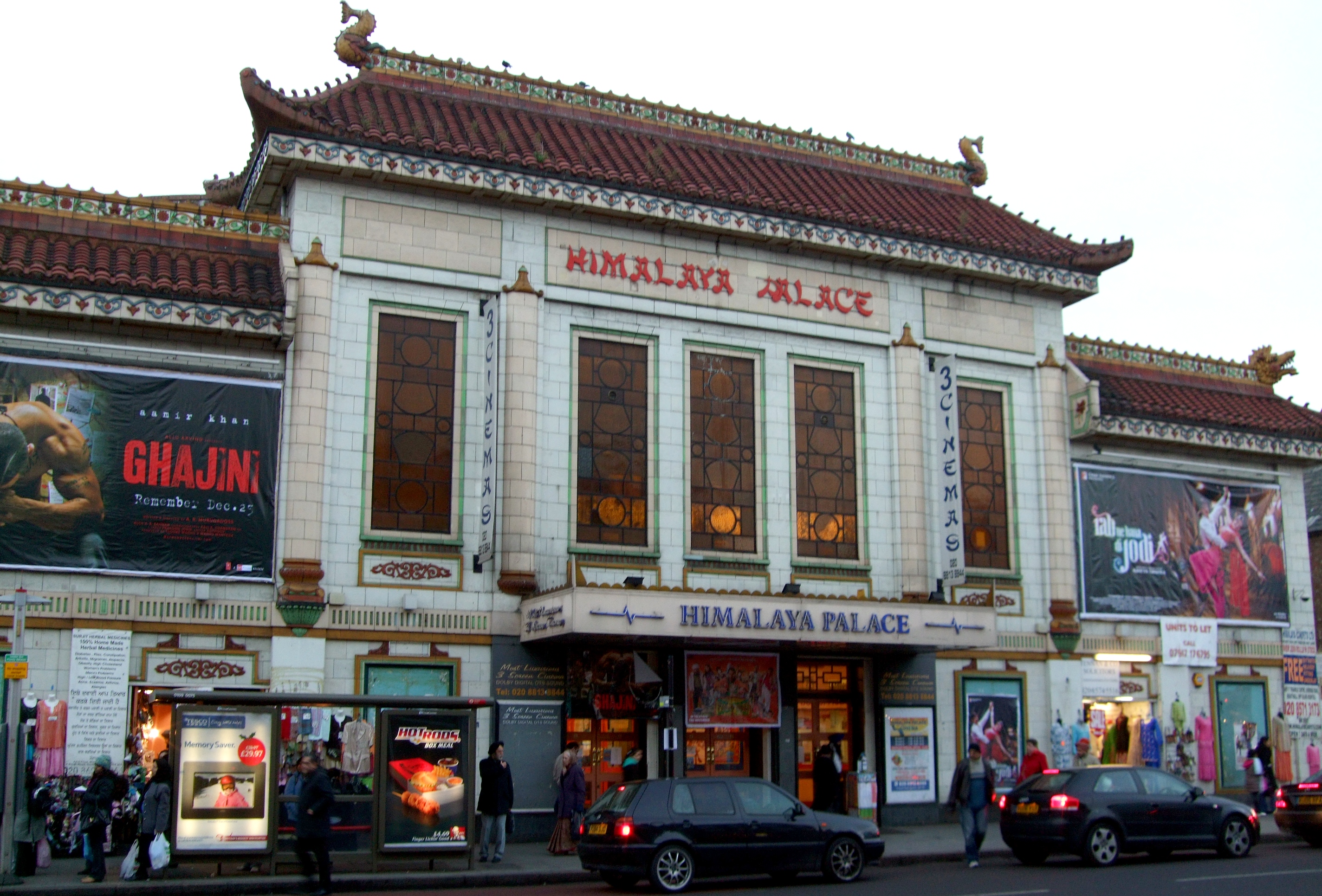
The now-defunct Himalaya Palace Cinema, Southall, London
At the Himalaya Shopping Centre there is a small store dedicated to Afghan music, religious objects, clothing, and film. There I buy two Pashto-language films produced and distributed in Pakistan: Jang aw Amn (1974, directed by Farooq Khan) and Zama Badal (1972, directed by Sana Ullah Khan Gandapur). While Zama Badal is almost painterly for its accumulated layers of media surfaces, is dissonant, ridden with glitches from lossy data transferal. It features a single-frame glitch that endures for more than ten minutes. The frozen image—in this case, a tableau of reconciliation between two previously feuding rivals—appears to hint at an unconscious, buried meaning. Much like the “cineseizure” of experimental filmmakers such as Martin Arnold or Peter Tscherkassky, whose found footage works extend mere seconds of Hollywood films into much longer narratives, the glitch creates a serendipitous, radical rethinking of context.
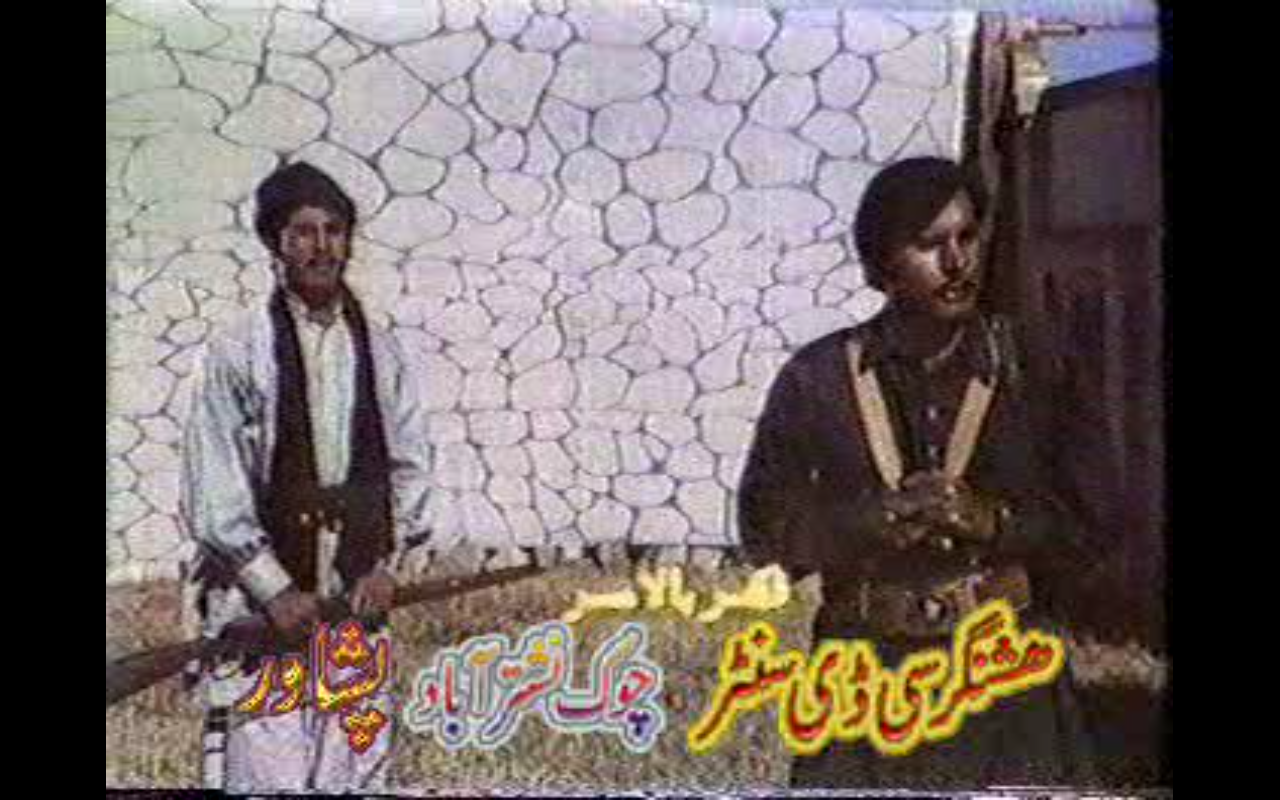
Still from Zama Badal
Hallmarks and milestones that demarcate the periods in an object’s lifecycle are revelatory of the infrastructure and local conditions from which it passed its most recent stage in the chain of distribution, as was the case with Pashto-language films bought in Southall and Pakistani films acquired in Tooting. There are a number of ways through which it might be possible to track and trace the circulatory dynamics of cinema. Any such methodology should ask similar questions about the material carriers and incarnations of a moving-image artifact as the ones anthropologists ask about social groupings. These would include questioning what societal possibilities does a moving-image carrier possess and to what extent can it be seen, on a case-by-case basis, to have realized these potentialities.
Media piracy’s capacity to archive popular culture can be shown through a focus on the migration of media and an examination of the processes of transferring and transcoding to more modern carriers and the fate of older carriers as they are relegated by processes of creative destruction. The practices of transfer and reproduction change the film, creating new kinds of objects, which include degradation, enhancements, cuts, and re-edits. The focus on surfaces and material aesthetics highlights the visible marks of data transfer, revealing the circulatory dynamics of migratory media, how these things move, what drives them, and how they are changing along the way.
Notes:
[1] See Sukhdev Sandhu’s Colloquium for Unpopular Culture at New York University. http://unpopcolloquium.blogspot.co.uk/
[2] Ramon Lobato, Shadow economies of cinema: Mapping informal film distribution. (New York: Palgrave Macmillan, 2012), 43.
[3] Brian Larkin, Signal and noise: media, infrastructure, and urban culture in Nigeria (Durham: Duke University Press, 2008), 1.
[4] Gregory F Treverton, Film Piracy, Organized Crime, and Terrorism (Santa Monica, CA: Rand Corporation, 2009), 95.


